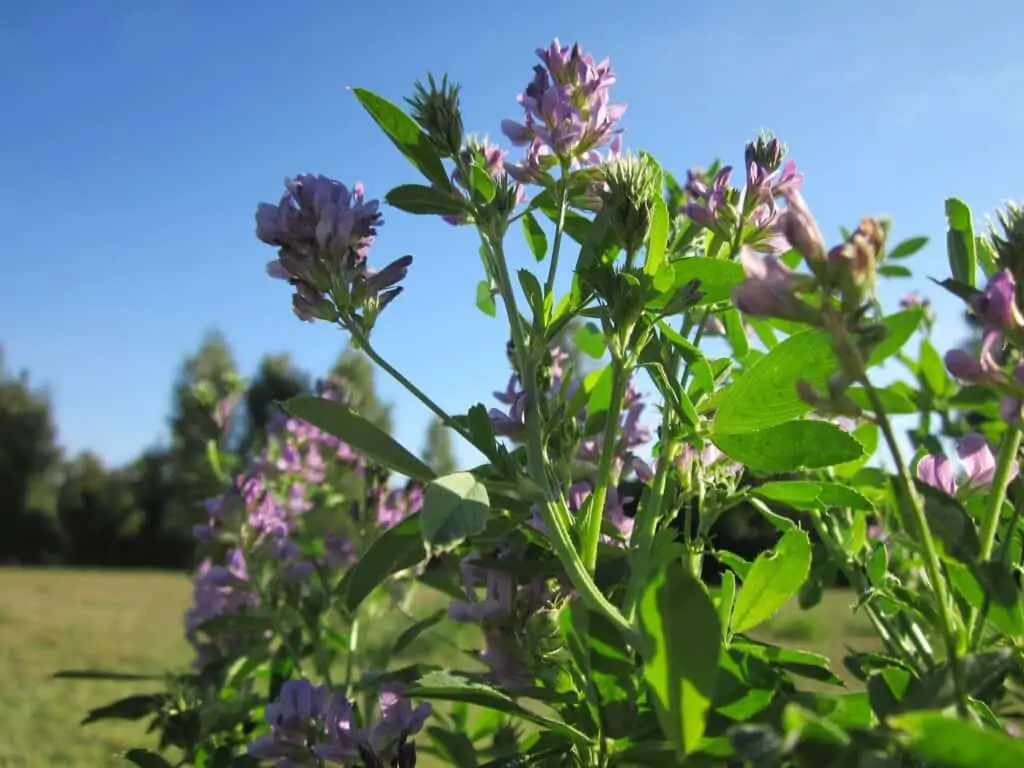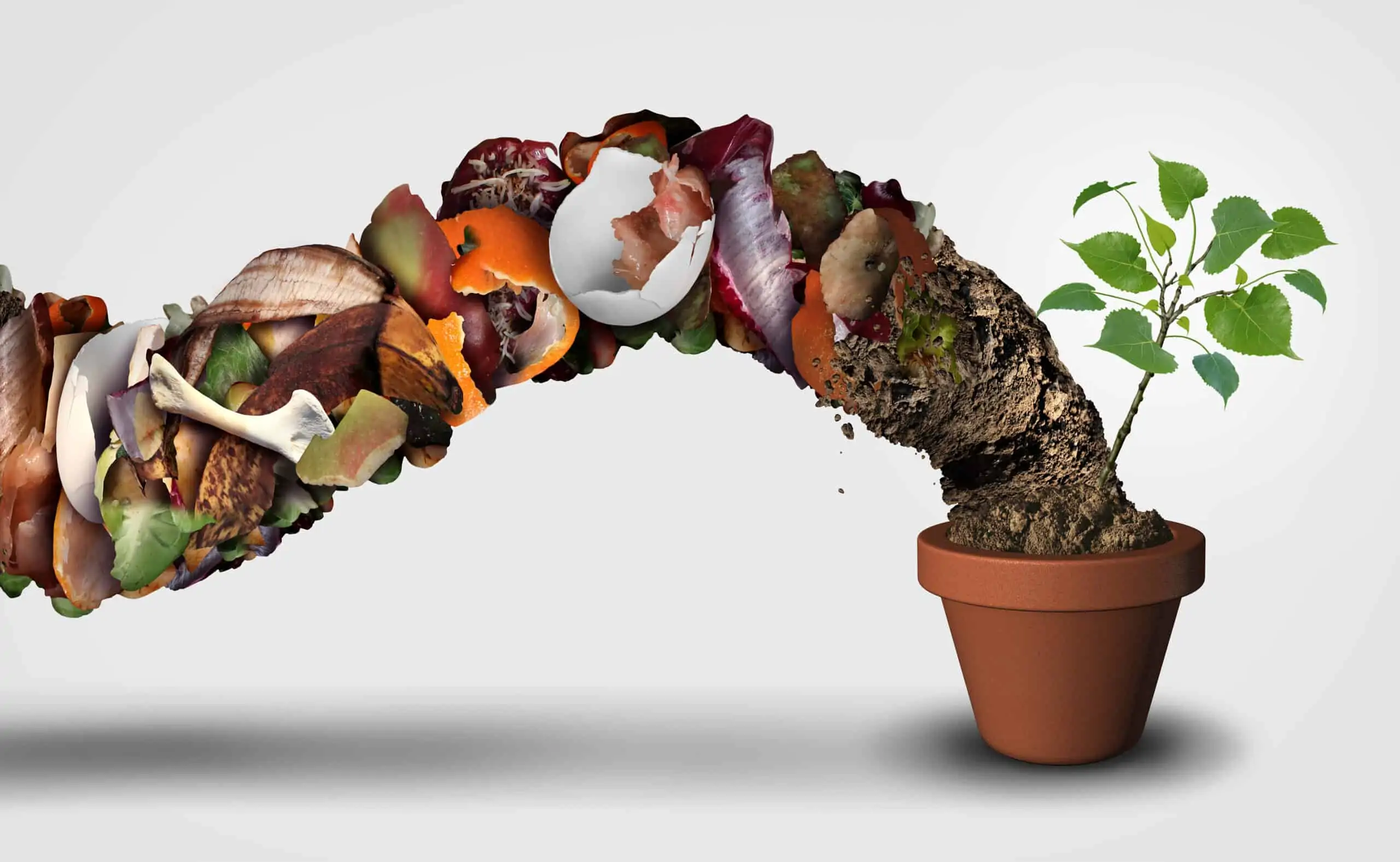As an Amazon Associate I earn from qualifying purchases.
I love making compost, I really do. I compost, think about compost, and write about it almost every day.
But when it really comes down to it, there are only two reasons that I make compost at home:
- I feel that it is a good use of kitchen scraps and yard waste
- To improve my soil
However, if there was an easier way to do both of those things, I would probably be right on board!
Well, luckily, there is! For many items, we can simply skip the composting step and apply it straight to the ground as natural fertilizer!
Using Natural Fertilizers On Your Lawn and Garden
As I pointed out in my article about different methods of composting, the line between composting and fertilizing can sometimes be blurred. After all, trench composting (such as burying your kitchen scraps in your garden) is very close to adding fertilizer. Both are simply ways to condition your soil while adding nutrients.
With that being said, I do take a slightly different approach when it comes to adding fertilizer to my garden. Since I typically try to avoid adding synthetic items to my soil (mother nature did fine for a million years, thank you….) I try to find natural remedies that will give my soil the nutrients that it needs.
Related Reading:
The 7 Best All-Natural Fertilizers
Short of making your own fertilizer, there are several ways that you can get started with natural options. Now, you probably won’t have all of these in your shed or kitchen. While some of them are simply scraps or common household ingredients, some of them are specialty purchases.
Before you get excited, remember that this list is meant more as a resource of things you can use instead of synthetic fertilizer rather than a means to stop composting. So compost on!
Before we get stuck in the mire, here’s a quick table and then a more thorough discussion of the 7 types of all-natural fertilizers that I use and recommend:
| Fertilizer | Average Grade | Amount to Apply (per 100 sq/ft) |
|---|---|---|
| Alfalfa Meal | 3-1-2 | 3.5lbs |
| Eggshells | 1.2-0.4-0.1 | – |
| Kelp Meal | 1.5-0.5-2.5 | 1-2lbs |
| Oak Leaves | 0.8-0.4-0.2 | 15lbs |
| Peanut Shells | 0.8-0.2-0.5 | – |
| Sawdust | 0.2-0-0.2 | 15lbs |
| Straw | 0.6-0.2-1.1 | 15lbs |
1. Alfalfa Meal

Alfalfa meal is just what sounds like, ground alfalfa plants. When dried and ground alfalfa forms a powder that is not only beneficial for plants but can be formed into pellets as animal food.
Alfalfa meal excels as a natural fertilizer because, not only is it a great source of organic matter and nutrients, but it contains triacontanol. Triacontanol is a compound that is known to increase plant production/reproduction, growth rate, and photosynthesis. Because of this it is often distilled or synthesized to be added directly to plants. With alfalfa, however, you can get the benefits naturally!
Alfalfa meal also acts as a soil conditioner which can loosen up and improve both the drainage and the water-holding capacity of poor soils.
2. Eggshells
Eggshells are great in both compost piles and as a natural fertilizer. They contain relatively high levels of calcium as well as tons of micronutrients. The main problem is that eggshells take an extended amount of time to break down before the nutrients can be used by plants.
To expedite this, dry your eggshells (overnight is usually fine) and crush them into the smallest bits possible. Once crumbled, you can simply sprinkle on the soil you want to fertilize.
I didn’t include a recommended amount of eggshells to spread because I couldn’t really imagine a scenario where you have too many eggshells. If you work in an egg factory or something you’re on your own to figure out how many eggshells are too many!
3. Kelp Meal
As with alfalfa meal, kelp meal acts as an excellent source of organic material (which provides micronutrients) as well as conditioning the soil. Instead of adding to plant growth, however, kelp meal has another extraordinary ability: it increases the plant’s ability to stress. Plants grown in soil treated with kelp meal show increased resistance not only to drought but to freezing as well.
Although kelp contains relatively small amounts of typical nutrients N, P, and K, it also contains natural growth hormones that increase the yield of individual plants.
If you are looking to loosen up hard soil, alfalfa meal may be a better option than kelp as twice as much volume is typically applied per given area.
4. Oak Leaves
Many people are afraid of adding oak leaves to their compost because they buy into the old wives’ tale of them being “too acidic.” Not true! Not only are oak leaves an absolutely amazing addition to compost, but they can also be added directly to soil as either fertilizer or mulch.
As mulch or fertilizer, oak leaves can be added to soil in large quantities. Before adding leaves they should be shredded or chopped so they break down more easily. In fact, when I had an oak tree in my yard I would simply mow over piles of oak leaves in the fall and let them settle into my lawn.
Not only do oak leaves break down quickly, but they can help to suppress weed growth, conserve moisture, and even moderate the temperature of the soil.
5. Peanut Shells
When adding natural fertilizer to your soil, you’re not really bypassing the decomposition process, you’re just changing where it takes place. Peanut shells are a great source of carbon that can aerate compost piles as well as your soil. When added to soil, however, they can be extremely slow to break down.
You can speed up the rate at which nutrients are available the same way you would do it if you are talking about composting ratios: by adding a nitrogen source. Having a rich source of nitrogen (such as coffee grounds) will ensure that your peanut shells will break down as quickly as possible. Expect it to still take several years before you no longer see them, however, they will be adding value the whole time.
6/7. Sawdust/Straw
These last two natural fertilizers on the list function similarly enough that we can lump them together. As with peanut shells, sawdust and straw are extremely rich sources of carbon that can be also beneficial in conditioning your soil.
Because of the rate at which they break down (very slowly) most people choose to compost these first. If you are also looking to loosen your soil, however, you can add them straight to the ground with a nitrogen source. Bloodmeal is also a great source to add and you can usually mix it in at 2-4lbs per bushel of sawdust to increase the decomposition process in the ground.
How Fertilizer Average Analysis Works
If you are familiar with how fertilizers are “graded” you’ll see that most of the natural fertilizers in our list have very little to offer in the way the traditional big three nutrients. They are, however, much safer and have a much wider variety of nutrients and soil conditioning prowess to offer your land.
If you’ve ever seen a lawn burned from fertilizer (or had it happen to you) go with a natural variety and save yourself the worry.
Now, if you’re unfamiliar with the system or what your soil needs, let me run through this with you.
Every type of fertilizer you buy has three giant numbers on the front which differentiate it from other fertilizers. This often looks something like “10-10-10″ which would tell you that it had equal amounts of Nitrogen (the first number), phosphate (the second number), and potash (the final number).
But which numbers are best for you?
Doing a soil analysis as detailed here will give you an idea of what nutrients your soil needs to be more hospitable. So don’t just go buy normal fertilizer or you can actually make the problem worse!
Should I Still Apply Synthetic Fertilizer to My Lawn and Garden?
Because I have a bunch of material to compost (I collect it and people are always dropping off stuff) I very rarely have a need for synthetic fertilizer. However, once you have tried to amend your soil with both compost and natural fertilizers you may want to do a soil analysis. If you are still significantly deficient you may want to consider a synthetic fertilizer with the proper ratios to fix your problem.
Before that, however, I would use high-quality compost to top-dress your lawn and the ground where you will be planting. Just be aware that most natural fertilizers and composts need a year or more to fully affect the ground. In fact, some studies have shown that it takes a full 5 years for natural fertilizers to have full effect as it takes time for the nutrients to break down enough to be bioavailable to plants.
Conclusion
At the end of the day, I don’t hate synthetic fertilizers. Despite the fact that they (and their production) pollute groundwater they probably have a place in some people’s gardens. My family, however, will always do our best to continue our gardening as close to the way nature intended as possible. Whichever you choose, know that all-natural fertilizers can be just as effective and much safer!


